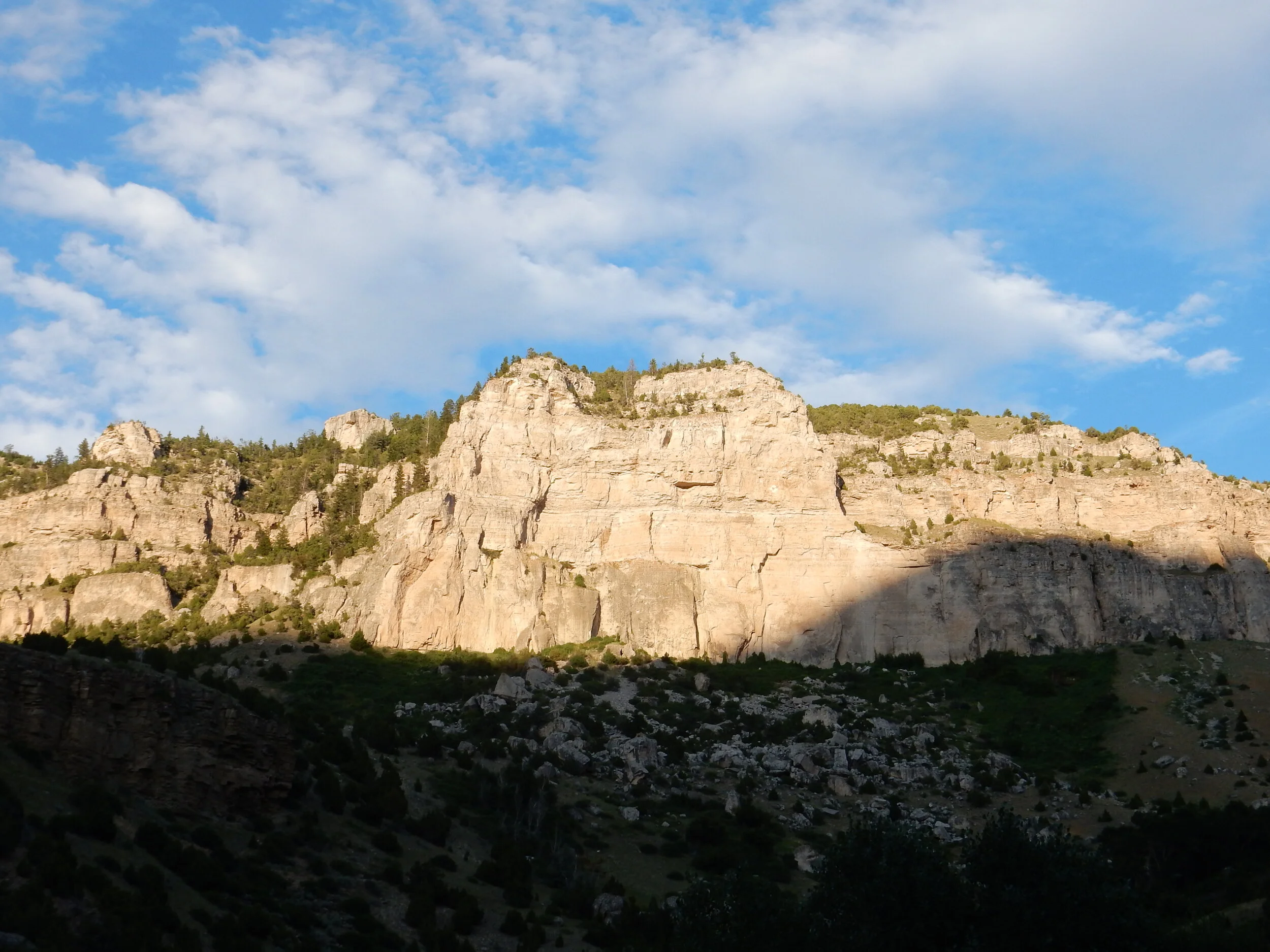From a river’s beginnings in the snow-capped mountains to its meeting with a ocean, it is common for its courses to have more than one name—No Name Creek flows into a Rock Creek, joined by a Boulder Creek, and so-on down the river. At the Wyoming’s “Wedding of the Waters,” just south of Thermopolis, however, a river simply changes its name from Wind River to Bighorn River—same river, no joining of tributaries, just a different name.
History has it that early explorers coming upriver from Montana named it the Bighorn River (for the bighorn sheep found along it). Trappers and other explorers coming downriver from the Absaroka Mountains and Wind River Range named their river the Wind River. In time they came to realize it was the same river and, to settle the matter, a site downstream of the Wind River Indian Reservation was designated the “Wedding of the Waters” — a spot on the map where the Wind River ends its 185-mile meander and the Bighorn River begins its 460-mile journey to join the Yellowstone River in Montana.
It is one of the few places in the world, if the only one, where a river changes its name in midstream. It is also a tremendous fishery.
Wind River and the Wind River Canyon, just upstream of the “Wedding of the Waters.”


